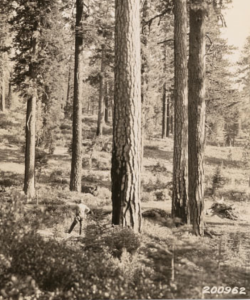VTM data helps us understand changes to California forests
/ Some press on our PNAS paper: Twentieth-century shifts in forest structure in California: Denser forests, smaller trees, and increased dominance of oaks.
Some press on our PNAS paper: Twentieth-century shifts in forest structure in California: Denser forests, smaller trees, and increased dominance of oaks.
- Berkeley News http://newscenter.berkeley.edu/2015/01/20/warmer-drier-climate-altering-forests-statewide/
- Daily Californian http://www.dailycal.org/2015/01/25/campus-team-collaborates-research-showing-decrease-diversity-california-trees/
- National Geographic http://news.nationalgeographic.com/news/2015/01/150119-california-forests-shrinking-climate-drought-science/
- LA Times http://www.latimes.com/local/lanow/la-me-ln-forest-study-20150119-story.html
- KTVU SF news http://wn.ktvu.com/clip/11049705/berkeley-drought-to-impact-climate-change-in-forests
- Nice NPR interview with Patrick http://www.scpr.org/programs/take-two/2015/01/22/41216/california-s-forests-see-significant-change-over-l/
- Huffington Post http://www.huffingtonpost.com/2015/01/20/california-big-tree-decline_n_6511870.html?utm_hp_ref=san-francisco
- The Conversation: https://theconversation.com/californias-majestic-trees-are-declining-a-harbinger-of-future-forests-36699
- IFL Science: http://www.iflscience.com/environment/california-s-majestic-trees-are-declining-harbinger-future-forests
In the paper we document changes in forest structure between historical (1930s) and contemporary (2000s) surveys of California vegetation. The shorthand is:
- Statewide, tree density in forested regions increased by 30% between the two time periods, and forest biomass declined by 19%.
- Larger trees (>60 cm diameter at breast height) declined, whereas smaller trees (<30 cm) have increased.
- Large tree declines were more severe in areas experiencing greater increases in climatic water deficit since the 1930s.
- Forest composition in California in the last century has also shifted toward increased dominance by oaks relative to pines, a pattern consistent with warming and increased water stress, and also with paleohistoric shifts in vegetation in California over the last 150,000 years.